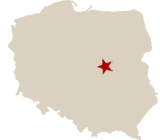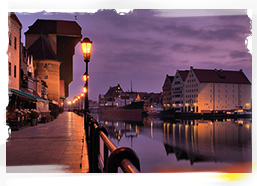An Introduction to Poland
A state similar in scope to the current Republic of Poland was established by the Piast dynasty by 966, when King Mieszko I converted it to Catholicism, and subsisted until the 14th century. Two centuries later, Poland joined with a powerful neighbour in the Polish-Lithuanian Commonwealth, but in 1795 it was partitioned between the Kingdom of Prussia, the Russian Empire and the Austrian. It was given independence in 1918, partitioned again by the neighbouring dictators in 1939 and devastated in the Second World War in which 6 million of its citizens perished. Approximately half of these were Jews - 90 percent of Poland's pre-war community. See full country profile.Latest Research News from Europe (Other)
18 current Other European jobs including:
Customer Support Executive - Become the Client Success Hero at Ipsos.Digital, Bucharest Office or Remote (Romania), EUR Competitive salary & benefits - (posted Jul 22 2025)
PHP Developer - Engineer Revolutionary Features for Ipsos.Digital's Research Platform, Bucharest Office or Remote (Romania), Competitive salary & benefits - (posted Jul 16 2025)
Senior C#/.NET Software Engineer (Backend), Remote (Romania), Competitive salary and benefits - (posted Jul 15 2025)

GOVERNMENT: Parliamentary republic
AREA: 312,685 sq km
POPULATION: 38,501,000 (July 2011 census)
MAJOR LANGUAGE: Official Language: Polish

Some business and general info
The Market Research Industry
Trade and Industry in Poland
Poland is lower-lying than its southern neighbours, with the fertile valleys of the Oder and Weichsel dominating the centre and southwest of the country, but has high mountains - the Tatras - in the south and a region of lakes, including the famous Masurian Lakes, in the northeast, as well as a number of gulfs and lagoons along the Baltic coast; one of Europe's five natural deserts (created by the melting of a glacier) in Dabrowa; and inland sand dunes in Sowiski National Park. As such it's home to some unusual wildlife including some of Europe's last surviving bison, the brown bear, grey wolf and Eurasian lynx - and it's the most important location for European migratory birds, providing breeding grounds for around a quarter of the European total.
Go to next country
A state similar in scope to the current Republic of Poland was established by the Piast dynasty by 966, when King Mieszko I converted it to Catholicism, and subsisted until the 14th century. Two centuries later, Poland joined with a powerful neighbour in the Polish-Lithuanian Commonwealth, but in 1795 it was partitioned between the Kingdom of Prussia, the Russian Empire and the Austrian. It was given independence in 1918, partitioned again by the neighbouring dictators in 1939 and devastated in the Second World War in which 6 million of its citizens perished. Approximately half of these were Jews - 90 percent of Poland's pre-war community.
It emerged from Soviet domination in 1989 almost a decade after the birth of the independent trade union Solidarity, led by Lech Walesa - the union was banned in 1981 but continued underground with support from the Catholic church, and led a wave of strikes in 1988 which forced the government to negotiate - the first nation to emerge from behind the Iron Curtain. Poland employed shock therapy economics to rapidly develop its economy and was the first post-communist state to see its GDP recover past 1989 levels, by 1995. In terms of human rights, international involvement and economic progress it has been in the vanguard of the emerging eastern bloc, and with 38m people it's the most populous nation in the former eastern Europe.
GDP: $771.6 bn (2011 est.); $20,334 per capita
Religions 88.4% of the population belonged to the Catholic Church
Currency: Zoti (PLN); $US 1 = 3.39 PLN
Telephone Code: + 48
MR Association(s):
Polish Association of Market and Opinion Researchers (OFBOR)
Poland is the 18th largest research market in the world, and the 10th largest in Europe. 81 percent of MR turnover comes from domestic clients and 19 percent from international. According to the ESOMAR Global Prices Study 2012 the country was the 56th most expensive for carrying out research.
Source: ESOMAR
Poland has come out of communism at a run, transitioning quite smoothly from a centrally planned to a market-based system, and currently has one of the EUs fastest-growing economies, even avoiding recession in 2008-9. A strong domestic market, low private debt, flexible currency and diversified exports are all plus points. Salaries have grown, the currency is strong and unemployment has fallen from 14.2% in May 2006 to 6.7% in August 2008, partly helped by the many Poles who have gone to work in the UK and elsewhere with the relaxation of border controls on EU entry. One of the few problems is an unclear legal framework which deters some countries and firms from doing business with the Poles and limits foreign investment.
Exports were $197.1 bn in 2011 with Germany the biggest partner (26.9% in 2010) and France, Italy and the Czech Republic also taking plenty (between 6 and 8%). Imports were $217.9 bn in 2011 with Germany again prominent (29.1% in 2010) and Russia (8.8%) and the Netherlands (6%) also important. Machinery and transport equipment go both ways, while chemicals, minerals and fuels come in and manufactured goods, food and live animals go out.
Email me:
laurence@mrweb.com

